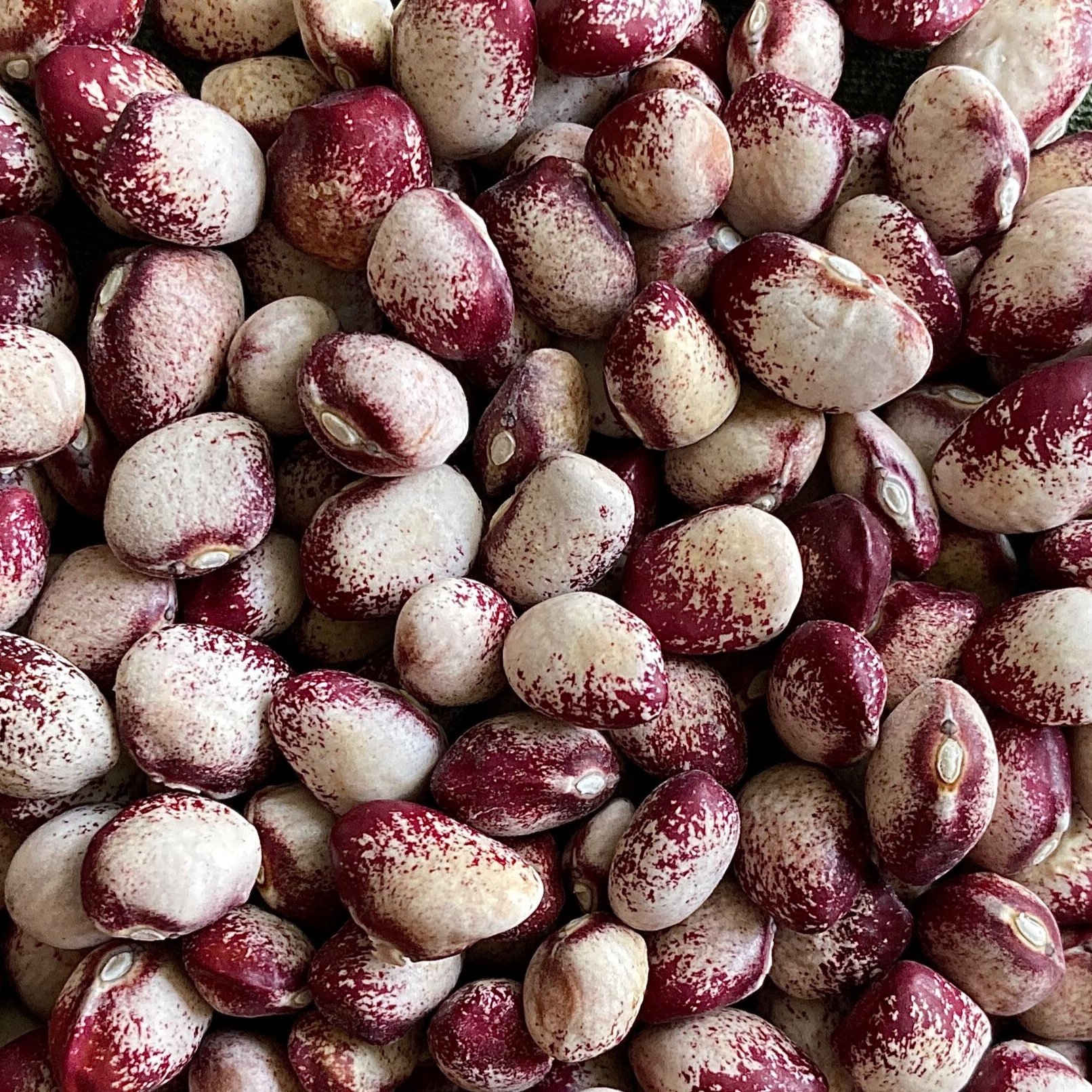 Image 1 of
Image 1 of


Soybean, Agate
Product Description: (Glycine max) This extremely rare variety of soybean was first collected by the USDA in 1929 from Sapporo, Japan. The climate of that region is quite similar to that of the Northeast United States, making this variety very well adapted to our shorter growing seasons.
Despite its small size, the Agate soybean is exceptionally high-yielding. The beans range in color from ivory to olive green with a dark brown saddle over the eye. They can be eaten fresh as edamame or shell beans but can also be used as a flavorful dry bean. Open-pollinated. 50 seeds per packet.
Growing Information: Plant outdoors after all danger of frost has passed. Direct seed roughly 2 inches apart and 1 inch deep in rows 2 feet apart. These plants are small and sturdy, requiring no trellising or support. 80 days to maturity.
How To Save Soybean Seeds
Leave pods on the vine until brown and brittle. Make sure that your plants receive adequate airflow to prevent mold growth during the drying process. However, a small amount of mildew spotting on the outside of drying pods is no cause for concern. Once dry, harvest the seed pods and crack them open. Sort out any damaged, misshapen, or infected seeds. Continue drying if needed then store them in a cool, dry location.
Product Description: (Glycine max) This extremely rare variety of soybean was first collected by the USDA in 1929 from Sapporo, Japan. The climate of that region is quite similar to that of the Northeast United States, making this variety very well adapted to our shorter growing seasons.
Despite its small size, the Agate soybean is exceptionally high-yielding. The beans range in color from ivory to olive green with a dark brown saddle over the eye. They can be eaten fresh as edamame or shell beans but can also be used as a flavorful dry bean. Open-pollinated. 50 seeds per packet.
Growing Information: Plant outdoors after all danger of frost has passed. Direct seed roughly 2 inches apart and 1 inch deep in rows 2 feet apart. These plants are small and sturdy, requiring no trellising or support. 80 days to maturity.
How To Save Soybean Seeds
Leave pods on the vine until brown and brittle. Make sure that your plants receive adequate airflow to prevent mold growth during the drying process. However, a small amount of mildew spotting on the outside of drying pods is no cause for concern. Once dry, harvest the seed pods and crack them open. Sort out any damaged, misshapen, or infected seeds. Continue drying if needed then store them in a cool, dry location.
Product Description: (Glycine max) This extremely rare variety of soybean was first collected by the USDA in 1929 from Sapporo, Japan. The climate of that region is quite similar to that of the Northeast United States, making this variety very well adapted to our shorter growing seasons.
Despite its small size, the Agate soybean is exceptionally high-yielding. The beans range in color from ivory to olive green with a dark brown saddle over the eye. They can be eaten fresh as edamame or shell beans but can also be used as a flavorful dry bean. Open-pollinated. 50 seeds per packet.
Growing Information: Plant outdoors after all danger of frost has passed. Direct seed roughly 2 inches apart and 1 inch deep in rows 2 feet apart. These plants are small and sturdy, requiring no trellising or support. 80 days to maturity.
How To Save Soybean Seeds
Leave pods on the vine until brown and brittle. Make sure that your plants receive adequate airflow to prevent mold growth during the drying process. However, a small amount of mildew spotting on the outside of drying pods is no cause for concern. Once dry, harvest the seed pods and crack them open. Sort out any damaged, misshapen, or infected seeds. Continue drying if needed then store them in a cool, dry location.





